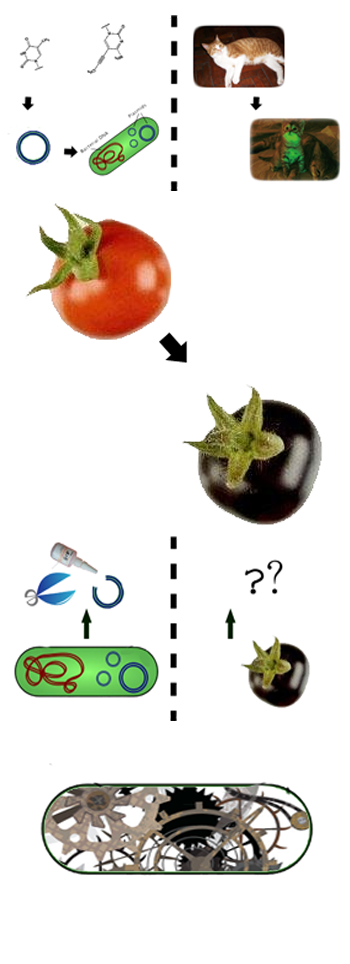Team:Peking S/project/hp/synGMO
From 2011.igem.org
Template:Https://2011.igem.org/Team:Peking S/bannerhidden Template:Https://2011.igem.org/Team:Peking S/back2
Template:Https://2011.igem.org/Team:Peking S/bannerhidden

Human Practice
Introduction|Synthetic Biology vs. Genetically Modified Organism|Public Investigation|Risks and Measurements Analysis
|Acknowledgement&Reference
Synthetic biology vs. Genetically Modified Organism
Synthetic biology is broadly defined as the area of intersection of biology and engineering that focuses on the design and fabrication of biological components and systems that do not exist in the natural world and re-design of existing biological systems [1]. Following engineering principles, synthetic biologists engineer complex artificial biological systems to investigate natural biological phenomena and to realize them in application [2], including detection of chemical pollutants, environmental cleanup, disease diagnosis and treatment, etc.
As opposed to modifying components of living cells to achieve desired function, a programmable microorganism is created from scratch in synthetic biology [1]. This feature distinguishes it from current genetic techniques that result in genetically modified organisms at the cellular level [1]. Rather than splicing in a gene from one organism to another, or forcing a mutation in a genome for a specific purpose, synthetic biology mainly concerns with designing and building artificial regulatory elements into genomes or constructing a complete genome out of nucleotides [1]. By its very nature, this is a multidisciplinary field requiring the expertise of biologist, engineers, and systems specialists among others [1].
How can we compare synthetic biology with other areas in biotechnology, especially those belonging to conventional bioengineering? What would be the differences between these bioengineered organisms and organisms created using a synthetic biology approach? To answer those questions, we outlined the differences below:
• Raw Material: In certain aspects of synthetic biology, synthetic elements would be constructed from basic elements in the lab. In particular, researchers synthesize unnatural nucleobases that would still pair following rules of size and hydrogen bonding complementarity, but differently from the natural nucleobases[4]. Researching by conventional bioengineering doesn’t involve in that kind of process.
• No counterpart: There may be little possibility to find an identical copy with synthetic elements or networks in natural cells. The genetically modified organisms are originated from whole genomes of existing organisms – although a minimal genome (critical genes for survival) organism would be more likely.
• Programmable: ‘programming’ actually means altering the hardware itself. Reprogramming a cell involves the creation of synthetic biological components by adding, removing, or changing genes and proteins[2]. It is difficult to achieving programming in a genetically modified organisms.
• Artificial: From the beginning of raw material, the end product would be an artificially assembled genome or “minimal genome” in the field of synthetic biology. One goal for synthetic biology is to take elements parts as building modules and synthesize artificial regulatory circuits that have preselected inputs and outputs[4]. Based on the characteristic of natural organism, genetically modified products differ from the artificial machines.
The key difference to be noted is that genetically modified organisms are the result of introducing naturally occurring foreign or mutated DNA (genes) into organism. Synthetic biology, in contrast, would result in the creation of elements with synthetic raw materials and with no natural counterpart [1].
 "
"
